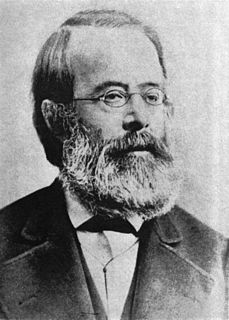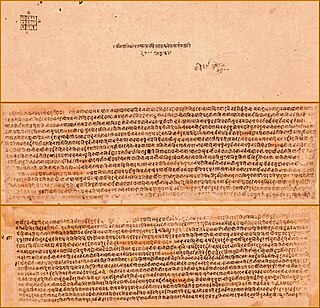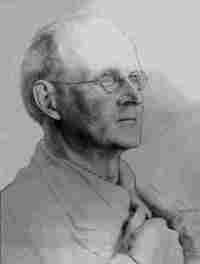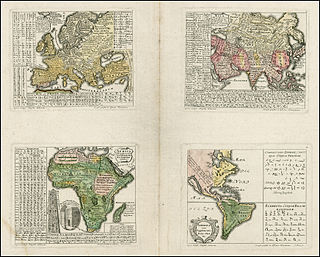 W
WAuraicept na n-Éces was historically thought to be a 7th-century work of Irish grammarians, written by a scholar named Longarad. The core of the text may date to the mid-7th century, but much material was added between that date and the production of the earliest surviving copy in the 12th century.
 W
WOtto von Böhtlingk was a Russian-German Indologist and Sanskrit scholar. His magnum opus was a Sanskrit-German dictionary.
 W
WThe term Cartesian linguistics was coined with the publication of Cartesian Linguistics: A Chapter in the History of Rationalist Thought (1966), a book on linguistics by Noam Chomsky. The word "Cartesian" is the adjective pertaining to René Descartes, a prominent 17th-century philosopher. However, rather than confine himself to the works of Descartes, Chomsky surveys other authors interested in rationalist thought. In particular, Chomsky discusses the Port-Royal Grammar (1660), a book which foreshadows some of his own ideas concerning universal grammar.
 W
WAvram Noam Chomsky is an American linguist, philosopher, cognitive scientist, historian, social critic, and political activist. Sometimes called "the father of modern linguistics", Chomsky is also a major figure in analytic philosophy and one of the founders of the field of cognitive science. He is Laureate Professor of Linguistics at the University of Arizona and Institute Professor Emeritus at the Massachusetts Institute of Technology (MIT), and is the author of more than 150 books on topics such as linguistics, war, politics, and mass media. Ideologically, he aligns with anarcho-syndicalism and libertarian socialism.
 W
WDe vulgari eloquentia "on vernacular eloquence" is the title of a Latin essay by Dante Alighieri. Although meant to consist of four books, it abruptly terminates in the middle of the second one. It was probably composed shortly after Dante went into exile, circa 1302-1305.
 W
WHartwig Derenbourg was a French Orientalist.
 W
WDictionarium quatuor linguarum is a 16th-century book by the German polymath Hieronymus Megiser that includes a multilingual dictionary and a multilingual grammar of Italian, Slovene, German, and Latin. It also includes some Croatian words. It was compiled and published in 1592 in Graz (Austria), then part of the Habsburg Monarchy. The dictionary is the first multilingual dictionary of Slovene. The appendix, named Exempla aliquot declinationum et coniugationium contains some grammar of the included languages and has been recognised as the second grammar of Slovene and the first multilingual grammar that includes Slovene. The book marks the beginning of Slovene lexicography. An extended edition was published under the same title in 1744 at Klagenfurt (Austria) by the Jesuits. This second edition also contains example phrases in German and Slovene, illustrating the use of the entries given. The number of Slovene equivalents in this edition is notably higher; they often reflect Carinthian Slovene.
 W
WThe Erotemata (Ἐρωτήματα) are the first printed basic Greek grammar in use in Western Europe, written by Manuel Chrysoloras who was a pioneer is spreading Greek literature in Western Europe.
 W
WThe International Phonetic Alphabet was created soon after the International Phonetic Association was established in the late 19th century. It was intended as an international system of phonetic transcription for oral languages, originally for pedagogical purposes. The Association was established in Paris in 1886 by French and British language teachers led by Paul Passy. The prototype of the alphabet appeared in Phonetic Teachers' Association (1888b). The Association based their alphabet upon the Romic alphabet of Henry Sweet, which in turn was based on the Phonotypic Alphabet of Isaac Pitman and the Palæotype of Alexander John Ellis.
 W
WEdmund Gustav Albrecht Husserl was a German philosopher of Moravian origin, who established the school of phenomenology.
 W
WKavirajamarga is the earliest available work on rhetoric, poetics and grammar in the Kannada language. It was inspired by or written in part by the famous Rashtrakuta King Amoghavarsha I, and some historians claim it is based partly on the Sanskrit text Kavyadarsha. Some historians believe Kavirajamarga may have been co-authored by a poet in the king's court, the Kannada language theorist Sri Vijaya.
 W
WGottfried Wilhelm (von) Leibniz was a prominent German polymath and one of the most important logicians, mathematicians and natural philosophers of the Enlightenment. As a representative of the seventeenth-century tradition of rationalism, Leibniz developed, as his most prominent accomplishment, the ideas of differential and integral calculus, independently of Isaac Newton's contemporaneous developments. Mathematical works have consistently favored Leibniz's notation as the conventional expression of calculus. It was only in the 20th century that Leibniz's law of continuity and transcendental law of homogeneity found mathematical implementation. He became one of the most prolific inventors in the field of mechanical calculators. While working on adding automatic multiplication and division to Pascal's calculator, he was the first to describe a pinwheel calculator in 1685 and invented the Leibniz wheel, used in the arithmometer, the first mass-produced mechanical calculator. He also refined the binary number system, which is the foundation of nearly all digital computers, including the Von Neumann machine, which is the standard design paradigm, or "computer architecture", followed from the second half of the 20th century, and into the 21st.
 W
WLingua Aegyptiaca Restituta was a 1643 work about the Coptic language by the Jesuit scholar Athanasius Kircher. It followed his 1636 volume Prodromus Coptus sive Aegyptiacus, the first ever published grammar of Coptic. Lingua Aegyptiaca Restituta was dedicated to the Holy Roman Emperor Ferdinand III and published in Rome by Herman Scheuss.
 W
WThe linguistic turn was a major development in Western philosophy during the early 20th century, the most important characteristic of which is the focusing of philosophy and the other humanities primarily on the relations between language, language users, and the world.
 W
WMundolingua is a museum situated in the 6th arrondissement of Paris. Its purpose is to present information, objects and documents relating to language, linguistic diversity and linguistics to the general public.
 W
WNirukta is one of the six ancient Vedangas, or ancillary science connected with the Vedas – the scriptures of Hinduism. Nirukta covers etymology, and is the study concerned with correct interpretation of Sanskrit words in the Vedas.
 W
WObeliscus Pamphilius is a 1650 work by the Jesuit scholar Athanasius Kircher. It was published in Rome by Ludovico Grignani and dedicated to Pope Innocent X in his jubilee year. The subject of the work was Kircher's attempt to translate the hieroglyphs on the sides of an obelisk erected in the Piazza Navona.
 W
WCharles Kay Ogden was an English linguist, philosopher, and writer. Described as a polymath but also an eccentric and outsider, he took part in many ventures related to literature, politics, the arts and philosophy, having a broad effect particularly as an editor, translator, and activist on behalf of a reformed version of the English language. He is typically defined as a linguistic psychologist, and is now mostly remembered as the inventor and propagator of Basic English.
 W
WPratishakhya, also known as Parsada, are Vedic-era manuals devoted to the precise and consistent pronunciation of words. These works were critical to the preservation of the Vedic texts, as well as the accurate ritual recitations and analyses of the Vedas, particularly when isolated words interact after they have been joined in sandhi procedures. Each Vedic school and geographic branch (sakha) developed their own manuals, explaining why they have come to be called parsada or pratisakhya.
 W
WProdromus Coptus sive Aegyptiacus was a 1636 work by the Jesuit scholar Athanasius Kircher. It was published in Rome by the Sacred Congregation for the Propagation of the Faith and dedicated to the Prefect of the Congregation, Cardinal Francesco Barberini. The book was Kircher's first venture into the field of Egyptology, and it also contained the first ever published grammar of the Coptic language.
 W
WShuowen Jiezi is an ancient Chinese dictionary from the Han dynasty. Although not the first comprehensive Chinese character dictionary, it was the first to analyze the structure of the characters and to give the rationale behind them, as well as the first to use the principle of organization by sections with shared components called radicals.
 W
WSynopsis Universae Philologiae is an early work on comparative linguistics by Gottfried Hensel, a rector in Hirschberg, Lower Silesia. Its full title reads: Synopsis universae philologiae: in qua: miranda unitas et harmonia linguarum totius orbis terrarum occulta, e literarum, syllabarum, vocumque natura & recessibus eruitur. Cum Grammatica, LL. Orient. Harmonica, Synoptice tractata; nec non descriptione Orbis Terr. quoad Linguarum situm & propagationem, mappisque geographico-polyglottis. It was published in 1741 in Nuremberg by commission of the Homann heirs company. A second edition appeared in 1754.